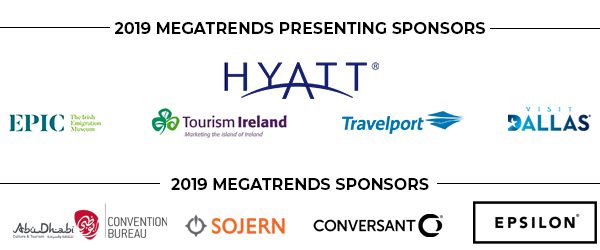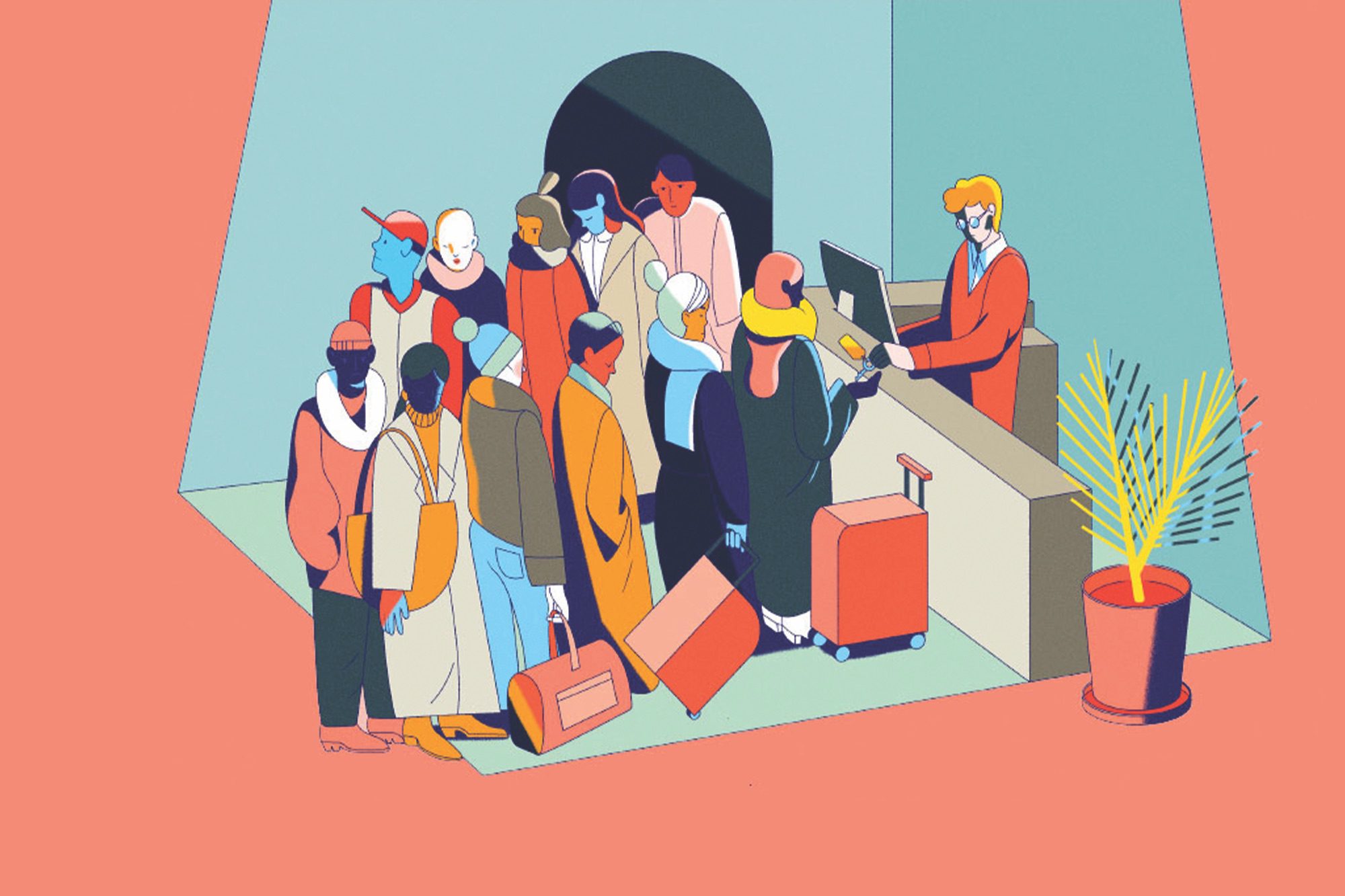Skift Take
From cockpits to guest rooms, the travel and tourism industry confronts a dire need in finding and training qualified job applicants to fill their needs. Training and rewarding workers in even the lowest-paying jobs is vital because they can make or break a brand or a trip.

Skift Megatrends 2019
In January we released our annual travel industry trends forecast, Skift Megatrends 2019. Download a copy of our magazine here and read on for additional individual trends in the coming days.
When a hotel management company was opening a new Homewood Suites near Salt Lake City, Utah, last year, the company posted job ads for housekeepers — and initially didn’t get a single applicant.
The company, The Hotel Group, eventually filled its positions and opened the property by recruiting workers at community colleges and offering bonuses for workers who remained on the job for various periods.
That difficulty in finding workers, particularly for lower-paying jobs such as housekeepers, highlights a growing labor shortage problem in the United States. Citing U.S. Bureau of Labor Statistics findings, the American Hotel & Lodging Association estimated in November 2018 that there were 900,000 unfilled positions in the U.S. hospitality industry, and that was a sharp rise from the employment gap that existed earlier in the year.
That difficulty in filling jobs isn’t just a problem for U.S. hospitality.
“Human capital development,” said Paul Pruangkarn, a spokesman for the Pacific Asia Travel Association, “is one of the industry’s greatest challenges, especially in a region experiencing an incredible rate of growth.” While the Pacific Asia Travel Association sees this as a priority in 2019 and for the foreseeable future, so does the American Hotel & Lodging Association, which offers several programs to develop talent in both low-level and managerial positions.
Get Your Skift Travel Megatrends 2019 Download Here
At the trade association’s committee meetings, recruitment and retention of skilled workers is an issue that members frequently bring up, Pruangkarn said. “Some members have created their own programs to recruit and train workers while others look at alternative solutions to address the issue,” he added.
A Wake-Up Call
One can easily see how the labor shortage may place increasing pressure on big travel and hospitality companies to treat their workers better in 2019. With the U.S. unemployment rate at a 48-year low, 3.7 percent in November; nationwide calls for a higher minimum wage; a strike against Marriott giving prominence to hospitality worker grievances; and little hope for immigration reform in a gridlocked Washington, D.C., there is every indication that the problem will be more acute this year. The only relief in sight from a labor shortage standpoint would be an economic recession — and nobody wants that.
The dilemma for hospitality workers at the low end of the wage scale is that they often live paycheck to paycheck trying to support their families, and some chains’ business models seem to be based around outsourcing and not giving their workers enough hours to make ends meet.
Brian Crawford, senior vice president of government affairs for the American Hotel & Lodging Association, said that even in U.S. municipalities where unions are not strong, “the starting wages for hotel employees far exceed the minimum wage.” In heavily unionized cities, such as Chicago, the starting hourly wage for room attendants is nearly $20, he said.
“The federal minimum wage might impact some of our properties that have restaurants attached to them; in large measure, it’s not an issue that we focus on,” Crawford said.
Crawford pointed out that the “global iconic brands” often have the resources to address the labor crunch and recruitment issues, while smaller, regional players likely don’t have the same options.
“Especially if you are a management company or an owner that operates in one geographical area, you’re drawing upon the workforce available to you in that specific area,” Crawford said. “The brands obviously have a much further reach, and they have more resources.”
The hotel association realizes that it can’t rely on the government to pass legislation to increase the labor pool; there already is an acute shortage of available guest workers through the federal H-2B program to meet seasonal needs, for example, as the hospitality industry has to compete with other sectors for the limited ranks of these foreign workers.
“When there’s not enough workers, what happens is is that resorts and hotels suffer,” Crawford said. “They can’t operate at full capacity. Maybe they can’t take on that wedding that occurs over the weekend or maybe they can’t have 100 percent of their rooms available. It is a real challenge, and the reality is that with this low unemployment, there are very few Americans that are seeking part-time seasonal employment. They want full-time employment, and it’s a very competitive market.”
Crawford noted that the American Hotel & Lodging Association is working with Grads of Life to recruit young people into low-skilled positions so “they can get their foot in the door”; started an apprentice program for hotel assistant general managers, and is offering a cost-free college program through tuition reimbursement and scholarships for recruitment and retention purposes.
“What we do is pull all those pieces together for the applicant while they are working at the property,” Crawford said. “They could also be going to school online or in person to further their degree.”
Get Your Skift Travel Megatrends 2019 Download Here
To varying degrees, the difficulties in training and finding workers to meet the needs of the travel and hospitality industry is a global problem.
In the ridesharing industry, for example, Uber struggles to recruit and retain drivers, who are independent contractors, and is enticing them with rewards and other incentives. Taking a page from Starbucks and the U.S. hospitality industry, Uber is helping drivers obtain college degrees.
Many tourism boards around the world grapple with training locals, from taxi drivers to airport employees, in customer service so visitors will have satisfactory experiences when arriving on vacations.
Pruangkarn of the Pacific Asia Travel Association noted how recruitment for tourism and hospitality jobs is a key challenge in the region. The association has a young tourism professional ambassador program for outreach to university students and for visits to the organization’s student chapters.
“Over the past few years, we have also created various activities and programs for youth from around the region to get involved and have their voices heard,” Pruangkarn said.
The training and recruitment of enough airlines pilots is also a growing concern in regions such as Southeast Asia, for example, where domestic and international tourism is increasing at a frenetic pace. The New York Times highlighted the issue when discussing the November crash of Lion Air flight 610 into the Java Sea.
“The crash also points to a growing problem in aviation indirectly caused by the advent of low-cost airlines and an explosive growth in the number of people who can afford to fly,” the story said. “While Boeing and its European rival, Airbus, are producing planes as fast as they can, the number of experienced pilots, aircraft engineers, mechanics, and even air safety regulators has lagged.”
Even if a potential economic recession relieves some of the strains on labor shortages, the travel and hospitality industry would still have to put together economic packages to entice high-caliber employees to join its ranks.
Download Your Copy of Skift Travel Megatrends 2019

Have a confidential tip for Skift? Get in touch
Tags: airlines, labor, megatrends 2019, pilots
Photo credit: That difficulty in finding workers, particularly for lower-paying jobs such as housekeepers, highlights a growing labor shortage problem in the United States. Amanda Berglund / Skift
